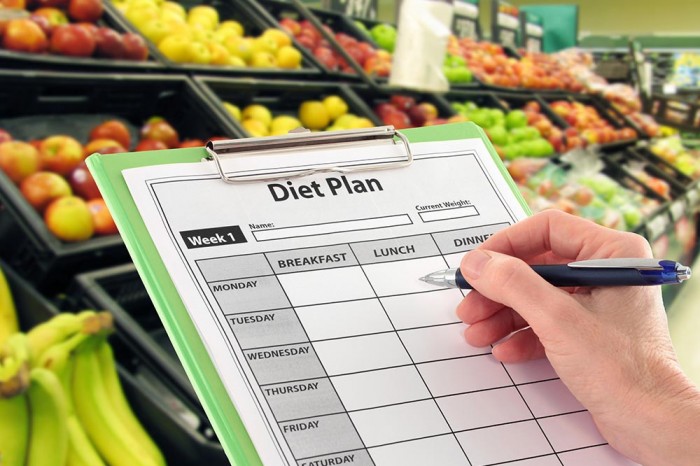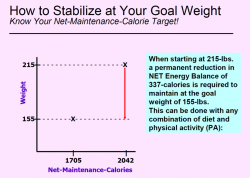
The Rules of Weight Loss You Can’t Ignore!
Joel Peterson – Level 5 Personal Trainer Apple Athletic Club
If you’re trying to lose weight but don’t understand how your body works, your odds of success aren’t good. You need accurate information about how your body works. This week we are going to look at the basics of weight loss (or gain) as put forth by Beyond Diets. I seldom recommend books as most are “fad diets” or just plain unhealthy eating plans. But I highly recommend “The New Healthy Eating and Weight Management Guide (&Workbook)” by Doreen Robinson RD CDN. You can find it on Amazon for about $20. This is the program that Personal Trainers and Weight Loss Trainers use at the Apple Athletic Club with great success. It’s tried and true!
In the following weeks we will explore many of the main points:
- How many calories do I need to eat?
- How many calories should I burn in activity each week?
- What changes (in my energy needs) can I expect during weight loss?
- Stimulus Control – Record Keeping – Physical Activity, etc.
ENERGY BALANCE BASICS
Gaining weight: You gain weight when the amount of energy (calories) you consume as food and drink exceeds the energy your body uses up (energy expenditure) in the following three ways:
-
- Basic metabolic processes (the energy your organs and various body tissues use generally referred to as Resting Metabolic Rate or RMR). You can have your Metabolic Rate tested for an accurate reading. Most people are in the “normal range” of 9.5 calories for women and 11 calories for men per pound of body weight. Example: A 150 lb. woman = 1425 calories – A man = 1650 calories. This is the amount of calories you need for basic functions as digestion, breathing and so on. This calorie intake would maintain her 150 lbs. doing almost zero activity. For example if you ate 1425 calories and burned an additional 400 in activity, you would need to burn body fat for extra fuel. Conversely, if you ate 2050 calories and burned only 1425 you will have added body fat.
- Energy used in activities of daily living (taking the stairs, parking further out in the lot, etc.)
- Voluntary exercise (walks, what you do at the gym, exercise tapes, sports, etc.)
Exceeding energy expenditure means that at the end of the day, you are in positive energy balance. The excess energy is stored principally (but not all) as fat. Each pound of excess body weight represents approximately 3,500 calories.
Losing weight: On the other hand, you lose weight in the opposite scenario, when the total energy you expend (in items 1 through 3 above) exceeds what you consume in food and drink. In this case, at the end of the day you are in negative energy balance, which causes the body to draw upon its energy stores (use up body fat).

What we are talking about is actually a law of physics—The 1st Law of Thermodynamics: Energy cannot be created or destroyed, it only changes form. You hear a lot of theories out there; this isn’t a theory. Like gravity, this law of physics applies to every BODY.
Know your Goal Weight-Net-Maintenance-Calorie TARGET
Part of the reason so many fail at weight loss maintenance is that they don’t understand the difference between their current-weight-energy-balance and their goal-weight-energy-balance. In this case “energy balance” means the net calorie level that maintains a given weight; net-maintenance-calories.
Here’s an example with the numbers. A woman currently weighs 215-pounds, and her goal weight is 155-pounds. At 215-pounds her net-maintenance-calories are 2,042-calories per day. At her goal weight her net-maintenance-calories are 1,705-calories per day; 337-calories lower than for her current weight.

The 337-calories per day represents a quantification of the permanent lifestyle changes required to stay at her goal weight once she’s there. In other words to maintain her goal weight she will have to permanently maintain a net-maintenance-calorie balance at 1,705-calories per day. That means permanently cutting out 337-calories per day.
What are her two options to do that?
The two variables that you have control over: 1) what you eat and drink, and 2) how much you choose to move. Most successful maintainers achieve their success with a combination of these two variables: reduced calories-in, and increased calories-out.
This illustration should make it very clear why weight loss maintenance requires permanent lifestyle changes. Also, the more weight you choose to lose the bigger the permanent lifestyle changes required to do that! Here’s the recap:
-
-
-
- To lose weight you have to create an ongoing negative energy balance (through a lower energy intake and/or higher level of energy expenditure).
- To maintain weight loss, a permanently lower level of net-energy-balance must be maintained. This lower energy balance simply represents the energy balance appropriate to your new lower body weight.
-
-
Understanding ENERGY BALANCE is the foundation for success with weight loss, but only the beginning. Effectively problem-solving how lower energy intake and higher energy output is achieved is a complex challenge that requires addressing multiple variables. Next week we will explore these variables. Meanwhile you may want to go back through our archives and refresh yourself and healthy eating and physical activity.
